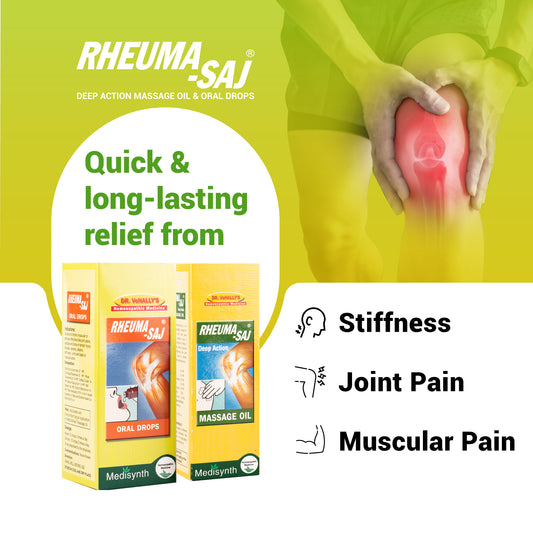5 Signs Your Bones Need Extra Support - and How to Strengthen Them

Strong bones form the foundation of a healthy, active life. They protect vital organs, store essential minerals, and provide structure and mobility.
However, as the body ages or experiences nutritional imbalances, bones can gradually lose their density and strength.
This weakening can lead to discomfort, fractures, and conditions like osteoporosis, if left unaddressed.
Recognizing the early warning signs of poor bone health can make a significant difference in long-term wellness.
By identifying these signals and taking proactive measures, it’s possible to maintain healthy bone density and prevent complications.
Understanding Bone Health
Bones are living tissues that constantly renew themselves through a process called bone remodeling.
This involves two key activities: the breakdown of old bone tissue (resorption) and the formation of new bone tissue (ossification).
During youth, bone formation occurs at a faster rate than breakdown, helping bones become stronger and denser.
After age 30, however, this process reverses, and bone loss can outpace bone formation.
Certain factors accelerate this decline, including poor diet, hormonal changes, sedentary habits, excessive caffeine, smoking, and vitamin D deficiency.
These lifestyle and nutritional gaps make understanding how to increase bone density a vital part of preventive health.
1. Frequent Joint and Muscle Pain
Frequent joint or muscle pain is one of the earliest signs that bones may need additional support.
When bones lose strength, surrounding muscles and ligaments often bear the extra load, leading to soreness and stiffness. This pain may appear after minimal physical activity or even during rest.
Ignoring these symptoms can eventually lead to limited mobility and increased risk of joint degeneration.
Maintaining bone health through proper nutrition, posture, and mild weight-bearing exercises can help manage discomfort and prevent further damage.
2. Recurrent Fractures or Slow-Healing Injuries
If bones break or crack easily after minor falls or take longer than usual to heal, this may indicate low bone density.
Healthy bones have a resilient structure capable of withstanding everyday stress. However, when bone minerals like calcium and phosphorus are depleted, the skeletal framework becomes fragile.
Delayed fracture healing is also a common concern in older adults and those with nutrient deficiencies.
Strengthening the bones through calcium-rich diets, exposure to sunlight for vitamin D, and targeted supplementation can accelerate recovery and help prevent future injuries.
3. Reduced Height or Stooped Posture
A gradual decrease in height or the appearance of a stooped posture can point to weakened vertebrae, often caused by loss of bone mass in the spine.
This symptom is particularly common in individuals suffering from osteoporosis or chronic calcium deficiency.
As spinal bones lose density, they compress under body weight, leading to a curved upper back or “hunched” appearance.
Addressing posture through stretching, yoga, and adequate calcium intake can slow down this change and preserve spinal strength.
4. Persistent Fatigue and Weakness
Weak bones often correlate with overall fatigue and reduced stamina. The skeletal system plays an important role in mineral storage and energy regulation.
When bone density drops, the body’s ability to maintain calcium and phosphorus levels diminishes, impacting nerve and muscle function.
Fatigue may also occur when bones no longer adequately support muscles and joints, causing the body to expend more energy on routine movements.
Ensuring balanced nutrition, sufficient hydration, and gentle exercise can restore vitality and reduce this feeling of tiredness.
5. Early Signs of Osteoporosis
Osteoporosis develops silently over time, often going unnoticed until a fracture occurs. Common indicators include back pain, brittle nails, gum recession, and fractures from mild impacts.
This condition results from decreased bone mass and deteriorating bone tissue, leaving the skeleton fragile and porous.
While osteoporosis cannot always be reversed, early intervention can slow its progression and reduce risk.
Regular bone density screening, maintaining a nutrient-rich diet, and adopting a physically active lifestyle are key steps in safeguarding bone health.
How to Strengthen Your Bones Naturally
Maintaining strong bones involves more than just calcium intake; it requires a combination of nutrient balance, physical activity, and healthy habits that support the body’s natural ability to regenerate bone tissue.
Here are effective ways to make bones strong naturally:
- Eat a calcium-rich diet: Include dairy products, sesame seeds, almonds, and leafy greens. Calcium is a key component of bone structure.
- Get enough vitamin D: Regular sunlight exposure and fortified foods help the body absorb calcium efficiently.
- Engage in weight-bearing exercise: Activities such as walking, yoga, and light strength training stimulate bone-forming cells.
- Avoid excessive caffeine and alcohol: Both can interfere with calcium absorption and weaken bone tissue over time.
- Maintain magnesium and phosphorus intake: These minerals work alongside calcium to maintain bone integrity.
- Stay hydrated: Adequate water intake supports nutrient transport and metabolic functions vital to bone health.
By combining these daily habits with the right natural remedies, it becomes easier to maintain bone density and reduce the risk of degenerative conditions.
Best Homeopathic Remedies to Increase Bone Density
Homeopathy offers a natural, long-term approach to improving bone health.
Instead of relying solely on calcium supplements, homeopathic remedies address the underlying factors that cause bone weakness, such as poor mineral assimilation, slow healing, and age-related bone loss.
1. Calcarea Carbonica
A classic remedy for weak or brittle bones, Calcarea Carbonica helps regulate calcium metabolism in the body.
It is especially beneficial for individuals who experience stiffness, fatigue, and recurring bone discomfort.
This remedy promotes bone mineralization and strengthens skeletal tissue, making it suitable for children, adults, and seniors.
2. Calcarea Phosphorica
Known for promoting bone growth and repair, Calcarea Phosphorica is ideal for those recovering from fractures or suffering from bone pain due to calcium deficiency.
It supports bone tissue regeneration and enhances the body’s ability to absorb essential minerals. This remedy is particularly helpful during adolescence, recovery periods, and old age.
3. Symphytum Officinale
Commonly known as “Comfrey” or “Bone-knit,” Symphytum Officinale plays a vital role in speeding up fracture healing and strengthening connective tissues.
It is widely used in homeopathy to repair damaged bone tissue and ensure proper alignment after injuries.
It also supports the recovery of bones that heal slowly or remain sensitive long after injury.
4. Causticum
Causticum helps maintain flexibility and is particularly beneficial for stiffness, contractures, and weakness of tendons and ligaments.
By improving mobility, it indirectly supports bone stability and strength, especially in aging individuals or those with long-term stiffness in the joints.
Best Homeopathic Medicine to Increase Bone Density
Ostofit Oral Drops
We recommend Medisynth’s Ostofit Oral Drops as a comprehensive solution for bone health because these drops combine time-tested homoeopathic principles with precise formulation to:
- Support bone density and strength
- Improve calcium absorption and metabolism
- Promote recovery from fractures and micro-injuries
- Help prevent osteoporosis and age-related bone weakness
- Enhance joint flexibility and mobility
Ostofit Oral Drops can be taken as a preventive measure for maintaining bone health or as part of a recovery plan for individuals with weak or brittle bones.
The gentle formula makes it safe for long-term use without the side effects commonly associated with chemical-based supplements.
The Role of Lifestyle and Nutrition
While homeopathic remedies offer excellent support, long-term bone health also depends on daily lifestyle choices.
A nutrient-rich diet, regular exercise, and stress management play complementary roles in keeping bones strong.
- Diet: Emphasize foods rich in calcium, vitamin D, magnesium, and phosphorus.
- Exercise: Weight-bearing activities such as brisk walking, stair climbing, and yoga help maintain bone mass.
- Sleep and Stress: Adequate rest and stress reduction improve overall balance, essential for bone regeneration.
Combining these lifestyle habits with homeopathic remedies such as Ostofit Oral Drops ensures a balanced, sustainable approach to improving bone density naturally.
Conclusion
Bone strength is an often-overlooked aspect of health until problems appear.
However, recognizing early signs such as fatigue, stiffness, reduced height, or slow-healing injuries allows for timely intervention.
By understanding how to make bones strong and taking steps to enhance bone density, it’s possible to maintain mobility, confidence, and independence well into later life.
A balanced approach - including nutrient-rich food, physical activity, and safe, effective homeopathic remedies - offers the best path forward.
Medisynth’s Ostofit Oral Drops, which contain classical remedies like Calcarea Carbonica, Calcarea Phosphorica, Causticum, and Symphytum Officinale, provide a natural and reliable way to strengthen bones from within.
When supported consistently, your bones will remain strong, flexible, and resilient for years to come.
References:
- Bone health: Tips to keep your bones healthy
- 11 ways to increase bone density naturally
- Pharmacological and alternative interventions for osteoporosis
- Effectiveness of Homoeopathic Medicines in the Treatment of Osteoporosis in Postmenopausal Age
- Boericke’s Materia Medica with Repertory


